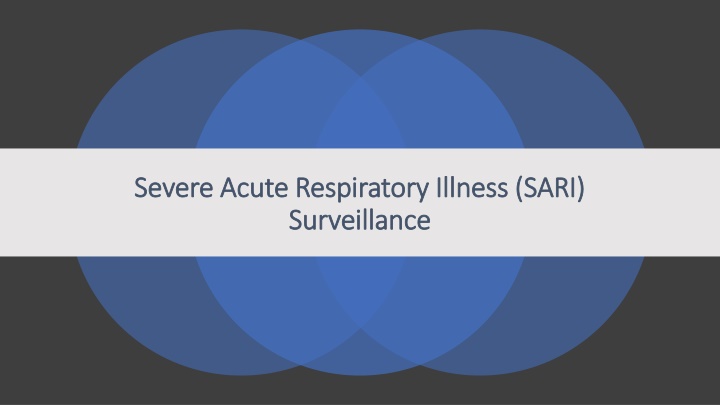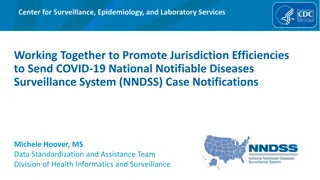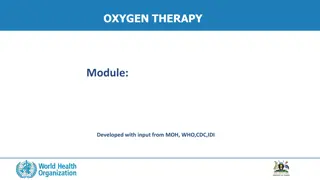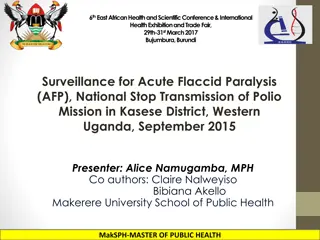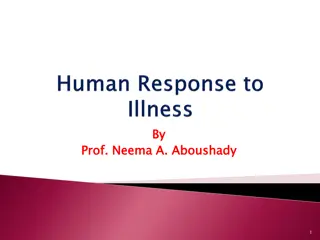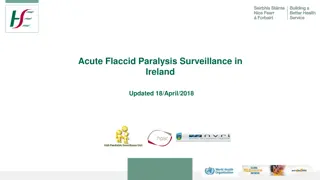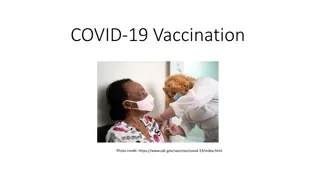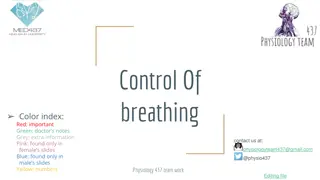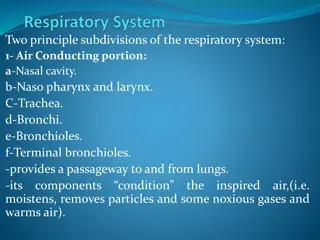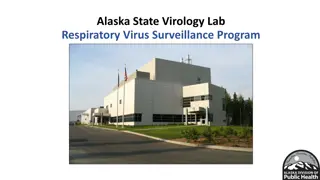Surveillance and Monitoring of Severe Acute Respiratory Illness (SARI) for COVID-19
Introduction to the surveillance of Severe Acute Respiratory Illness (SARI) with a focus on COVID-19 cases and clusters. The monitoring of hospitalized SARI cases, identification of unlinked cases, and implementation of control measures to reduce transmission are highlighted. Criteria for defining SARI cases and testing strategies for symptomatic individuals, travelers, contacts, and healthcare workers are detailed. The data collection process, including lab request forms and maintaining records, is outlined to track and manage COVID-19 cases effectively.
Download Presentation

Please find below an Image/Link to download the presentation.
The content on the website is provided AS IS for your information and personal use only. It may not be sold, licensed, or shared on other websites without obtaining consent from the author.If you encounter any issues during the download, it is possible that the publisher has removed the file from their server.
You are allowed to download the files provided on this website for personal or commercial use, subject to the condition that they are used lawfully. All files are the property of their respective owners.
The content on the website is provided AS IS for your information and personal use only. It may not be sold, licensed, or shared on other websites without obtaining consent from the author.
E N D
Presentation Transcript
Severe Acute Respiratory Illness (SARI) Severe Acute Respiratory Illness (SARI) Surveillance Surveillance
Introduction Coronavirus disease 2019 (COVID-19) is a respiratory tract infection caused by a newly emergent coronavirus , that was first recognized in Wuhan, China, in December 2019. Genetic sequencing of the virus suggests that it is a beta coronavirus closely linked to the SARS virus. (1) Most people with COVID-19 develop only mild or uncomplicated illness, approximately 14% develop severe disease that requires hospitalization and oxygen support, and 5% require admission to an intensive care unit. (2) Testing every severe and critical case in the hospital will leads to tracking of contacts and mild/asymptomatic case, there by identifying transmission zones. 1. China CDC Weekly. 2020;2(8):113-22 2. Yang X et al, Lancet Respir Med. 2020. Epub 2020/02/28. doi: 10.1016/S2213-2600(20)30079-5.
To monitor trends of hospitalized severe acute respiratory illness cases to identify COVID-19 cases and clusters. To identify unlinked SARI who have no history of contact with confirmed case or international travel. Objectives Objectives To identify areas where aggressive control measures including community-based interventions can be implemented to reduce transmission.
A case with Age > 15 years AND History of fever AND At least one respiratory symptom (cough, shortness of breath) AND Requires hospitalization SARI case SARI case definition definition
All symptomatic individuals who have undertaken international travel in the last 14 days: All symptomatic contacts of laboratory confirmed cases. All symptomatic health care workers. All hospitalized patients with Severe Acute Respiratory Illness (fever AND cough and/or shortness of breath). Asymptomatic direct and high-risk contacts of a confirmed Current testing Current testing strategy strategy
Data collection to be done in Lab Request Form and category 4 should be mentioned in testing proforma. Data Collection in Health Facility Copy to be retained in the health facility with the patient record. One copy can be sent to VRDL along with the COVID-19 testing request.
Data Collection (Contd.) A line list can be maintained at the facility and district level. Below data in an excel sheet with minimal variables to be maintained. H/o H/o Contact with confirmed COVID-19 case Internati onal travel in last 14 days Requires ICU at admission (Y/N) Date of Onset of symptoms Any Sample taken (Y/N) Test result (Positive/ Negative) Patient Name Age & Sex Date of Admission Death (Y/N) IP No Address comorbidities (Y/N)
Along with line list, data to be summarized on daily basis for each hospital at the district level as below, SARI Number of daily new SARI admissions Number of SARI deaths among all the hospitalized SARI cases Total number of SARI cases tested for COVID - 19 Total number of COVID-19 positive among SARI cases surveillance Outcome
Count of the hospitals SARI case cross the threshold When to initiate OR COVID-19 positive SARI case OR epidemiological investigation Death of suspect COVID-19 case OR SARI deaths cluster
Data Collection Flowchart Nodal person from District Surveillance Unit (DSU) will collect the information on daily IP SARI case and SARI deaths Initiate epidemiological investigation The data manager of DSU will do data entry for each hospital included in SARI surveillance SARI cases count increased than the hospitals threshold OR COVID-19 positive SARI case OR Death of suspect COVID-19 case SARI deaths cluster OR Data analyzed by the District Surveillance officer / District Epidemiologist District Surveillance officer / District Epidemiologist to share the report to the State Surveillance unit
